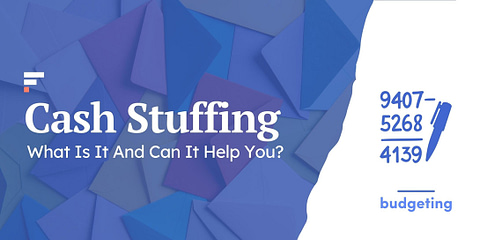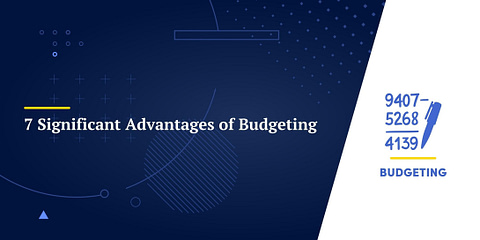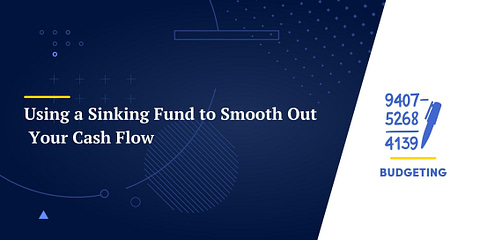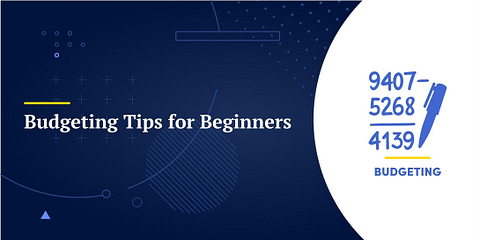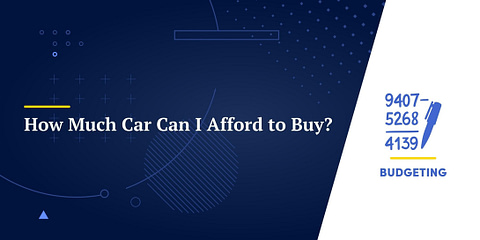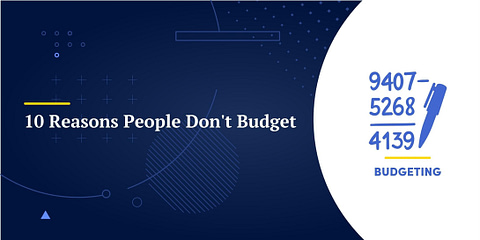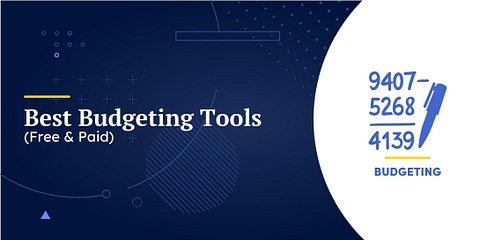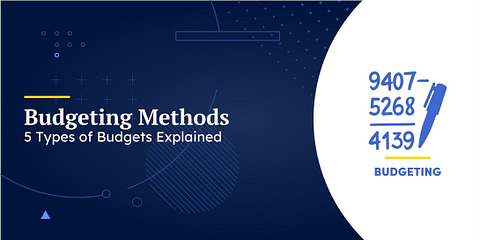One benefit of traditional employment is that your income is usually consistent. Your paychecks follow a strict schedule, and you likely have the net amount memorized. You can budget for the year knowing exactly when and how much cash will hit your account.
If you work on commission, pick up intermittent shifts, or own a business, your income probably won’t be nearly as predictable. In fact, it may vary significantly from month to month, trapping you in a feast or famine cycle that can make effective budgeting seem impossible.
If you’re having a hard time organizing your spending because you have inconsistent or unreliable earnings, here’s what you should know about how to budget on an irregular income.
Why It’s Hard to Budget on an Irregular Income
Before we cover the best way to budget on an irregular income, let’s clarify the primary challenges involved to ensure we address them sufficiently.
Inability to Base Spending on Income
Many of the most popular budgeting methods allocate your income into various buckets. For example, the 50/30/20 budget has you dedicate 50% of your income for necessary expenses, 30% for discretionary costs, and 20% for savings.
These approaches are popular because we instinctively base our spending on our income. For example, when we first enter the workforce, we typically make less money and have lower lifestyle expectations. We’re okay living with a roommate, driving a used car, and taking a cheap vacation or two each year.
However, as we grow more experienced and start to earn more, we inflate our lifestyle. We want to buy a house, upgrade the car, and take trips to Italy instead of Florida. That’s why people live paycheck to paycheck even while making six figures.
Unfortunately, when your income is irregular, you can’t use it to inform your budget as readily. In fact, doing so can lead to some significant problems, usually in the form of overspending.
👉 For example, say you’re a freelancer making $5,000 per month. You secure a contract with a new client, and suddenly your income goes up to $7,500 per month, so you finance a new car to celebrate. Three months later, one of your other clients decides to end their contract, knocking your income down to $6,000 per month. You’re stuck with the car payment, and it takes a much higher portion of your income than you’d like.
Surviving Periods of Lower Income
When your monthly earnings fluctuate, there will always be times that you need to pay your bills on a diminished income. If the fluctuations are significant enough, you may even have to survive with zero income for extended periods.
For example, imagine you’re a real estate agent that lives entirely on commission. You only sell four or five houses a year, but each one nets you around $20,000.
Say you sell your first house in January and your second one in April. You’d have to cover your financial obligations in February and March with that initial lump sum of $20,000. And in reality, you’d have no idea whether you’d need to make the cash last two months or five.
The only way to survive these lower-income periods is to set aside enough money from your higher-income periods. Unfortunately, we tend to be pretty bad at saving in America.
I don’t know whether that stems from a need to keep up with the Joneses or an inability to delay gratification, but the fact remains. As a result, most people with irregular incomes struggle to stay afloat while earning less.
📗 Learn More: Have you ever wondered why so many Americans live paycheck to paycheck and struggle to save? Take a look at our fascinating analysis on the subject: Are Americans bad at saving money?
How to Budget on an Irregular Income
We’ve established that the two primary challenges when budgeting on an irregular income are setting appropriate spending levels without knowing your exact income and surviving extended periods of diminished earnings.
Here’s a step-by-step strategy for overcoming those obstacles.
1. Track Your Current Expenses
As an accountant and personal finance writer, I’ve had dozens of people approach me for advice on how to get better with money. My first recommendation is almost always that they start tracking their expenses.
Before you can make any financial decisions, you have to know how much it costs to maintain your current lifestyle. Otherwise, any claim you make about your finances is a guess.
For example, you need to know your expenses to figure out:
- Whether you’re on track for retirement
- How long a fixed amount of savings can support you
- How long it’ll take you to save for something or pay off a debt
Your current expenses are also vital for creating a budget when your income is inconsistent. You have to know how much it costs to maintain your current lifestyle before you can start adjusting your spending up or down.
The easiest way to track your current expenses is to connect your bank account and credit card to software like Mint. It’ll even categorize your transactions as long as you avoid spending cash.
Once you have a month or two of data, use it to project your spending for an entire year. Remember to include your annual expenses, like car insurance and registration payments.
📗 Learn More: Choose the right set of budgeting tools to handle the actual mechanics of implementing your budget: 5 Best Budgeting Tools to Keep Your Finances on Track.
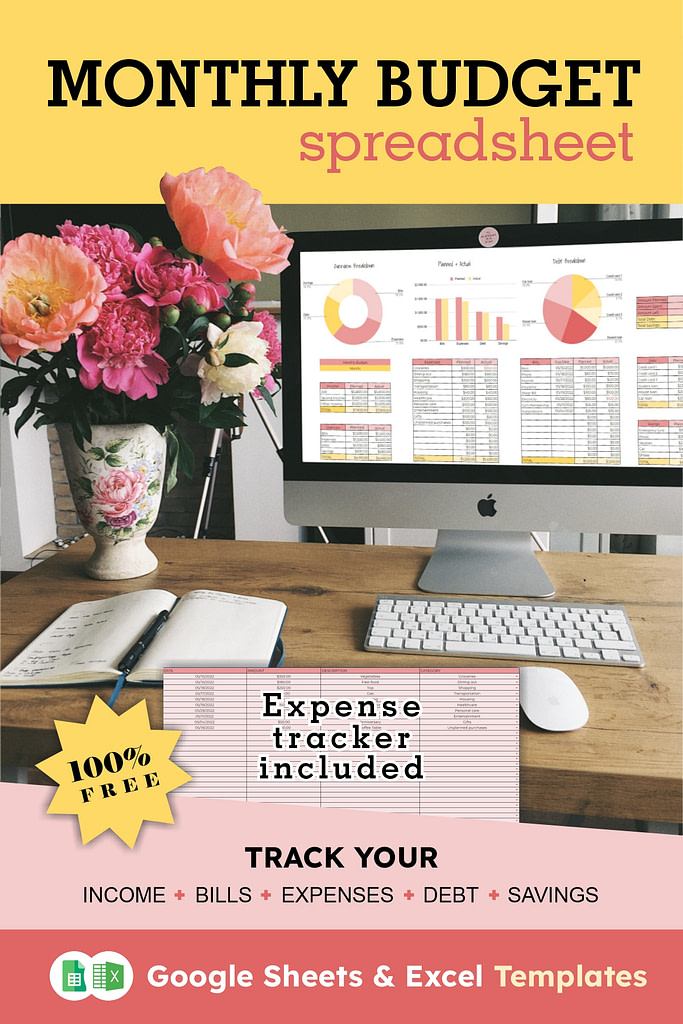
Free Monthly Budget Spreadsheet Template
- This simple monthly budget template makes budgeting fun and exciting.
- Easy-to-follow instructions so you can get started budgeting in no time.
- Access your budget online from anywhere. See all features
2. Determine Your Unavoidable Expenses
Once you have an accurate picture of your current spending, sort through your expenses to figure out which ones are unavoidable in your current position. That usually includes food, housing, transportation, debt payments, and insurance premiums.
In other words, if your income disappeared and you had to reduce your spending as much as possible, what couldn’t you eliminate?
☝️ Remember, you might face that reality unexpectedly, and you won’t have time to make significant changes when it happens.
For example, you can’t count on being able to move to another apartment to lower your rent at the drop of a hat, so include the cost of your current living situation in this number.
3. Forecast Your Worst-Case Income
Next, let’s set the expenses aside for a little and address your income. Even though you can’t predict exactly how much you’re going to earn, you should still be able to come up with approximate best and worst-case scenarios.
When you have an inconsistent income, you should generally budget for the worst. Ideally, you always want to avoid spending more than you make in a given month, and budgeting for your worst-case scenario prevents that.
👉 For example, say you’re self-employed and sell assorted products online. Your income is around $3,000 during slow months, but $5,000 on average and $7,000 around the gift-giving holidays. You’d want to use $3,000 as your worst-case monthly income.
4. Compare Your Numbers
At this point, you should have three numbers before you: your current spending, unavoidable expenses, and worst-case income. The relationship between them tells you what your next steps are. Let’s take a look at all the options.
First, if your current spending is less than your worst-case income, you’re in the clear. There’s no immediate need to change your budget, and you can comfortably divert all your excess income toward your savings goals.
Second, if your current spending is higher than your worst-case income, but your fixed costs are not, you should tighten your budget. Cut your discretionary expenses until your spending is below your worst-case income.
Third, if your unavoidable expenses are higher than your worst-case income, you’re at risk. A single low-income month will cause you to fall behind on necessary payments, like your rent or a loan. If you’re in this situation, move along to the next step.
5. Set Aside Savings for Any Deficits
If you know that you’ll eventually encounter periods where your unavoidable expenses exceed your income, the only way to avoid missing vital payments is to draw on your savings.
👉 For example, say you make between $3,000 and $6,000 every month, but your fixed expenses are $3,500. The only way to get through a $3,000-income month without going into debt is to pull $500 from your cash reserves.
To figure out how much you need in savings, consider your worst-case income and unavoidable expenses. If you know your worst-case income is $1,000 less than your fixed expenses, you need to have at least that much on hand.
The concept is the same when you have zero-income months. If the worst-case scenario is that you have to go three months without income, keep at least three months of expenses available.
When in Doubt, Save
If I could help everyone grasp one financial concept, it’s that you should always live well within your means. It’s a simple idea but surprisingly hard to implement. You can find people making $350,000 a year complaining that it’s just too hard to make ends meet.
If you don’t know your means because of your inconsistent income, err on the side of caution and keep your expenses as low as possible.
If you can manage to spend less than you earn for a year or two, you’ll find that something magic happens: You’ll start to accumulate cash. Once it becomes more than you know what to do with, start investing in assets. Eventually, you’ll become immune to the financial anxieties most people face.
With only $500 in savings, you live on a razor’s edge. A single surprise expense could send you spiraling into debt. But what about when you have $5,000 or $50,000? At some point, it doesn’t matter that your earnings fluctuate because you have enough cash to survive for months with no income whatsoever.
So if you’re struggling to budget on an irregular income and want the simplest solution, slash your expenses to the bone and save as much as you can. Your future self will thank you.
📗 Learn More: Are you interested in saving more money? Take a look at some of our favorite ways to get started: How Much Can You Save in a Year?


